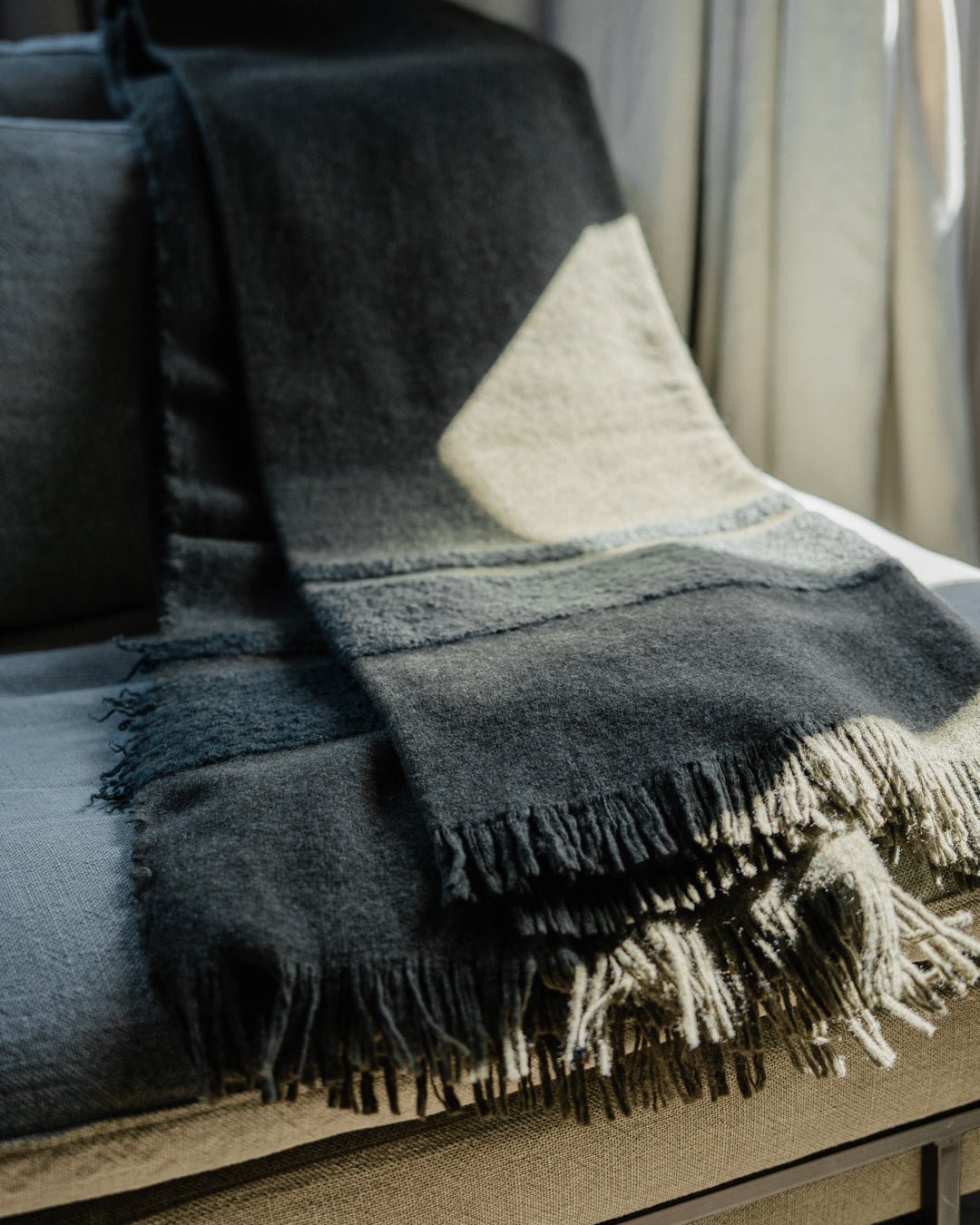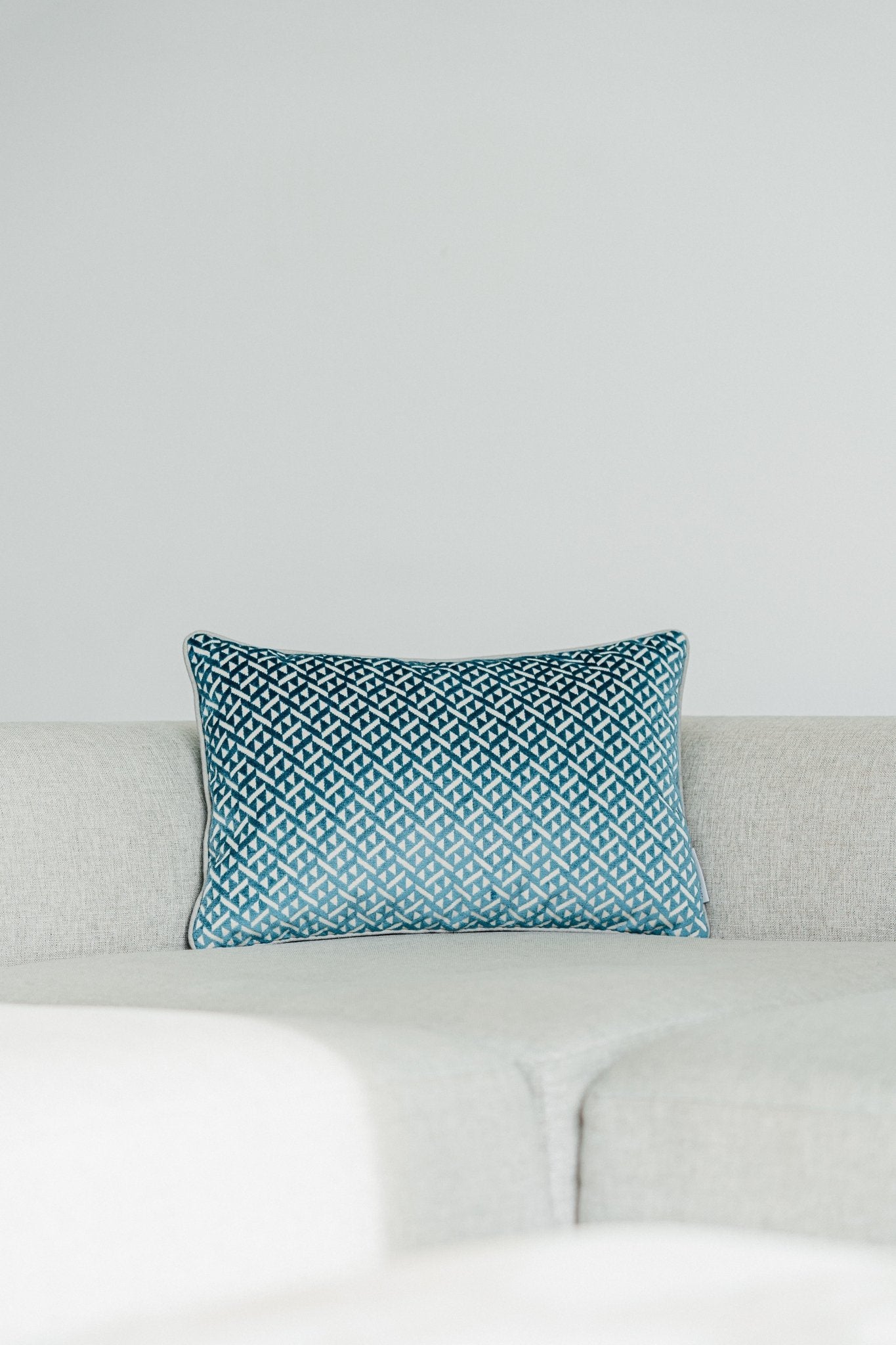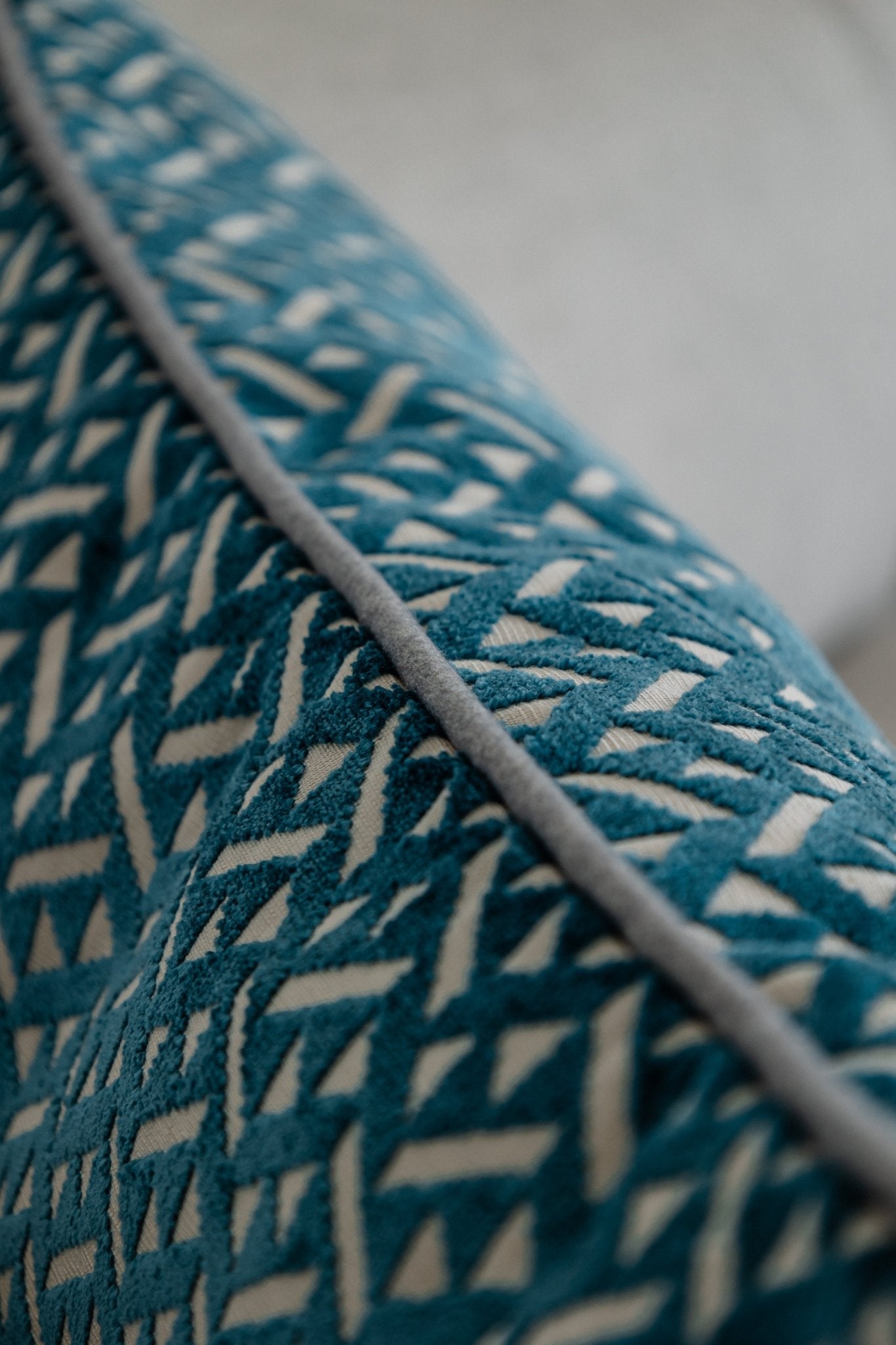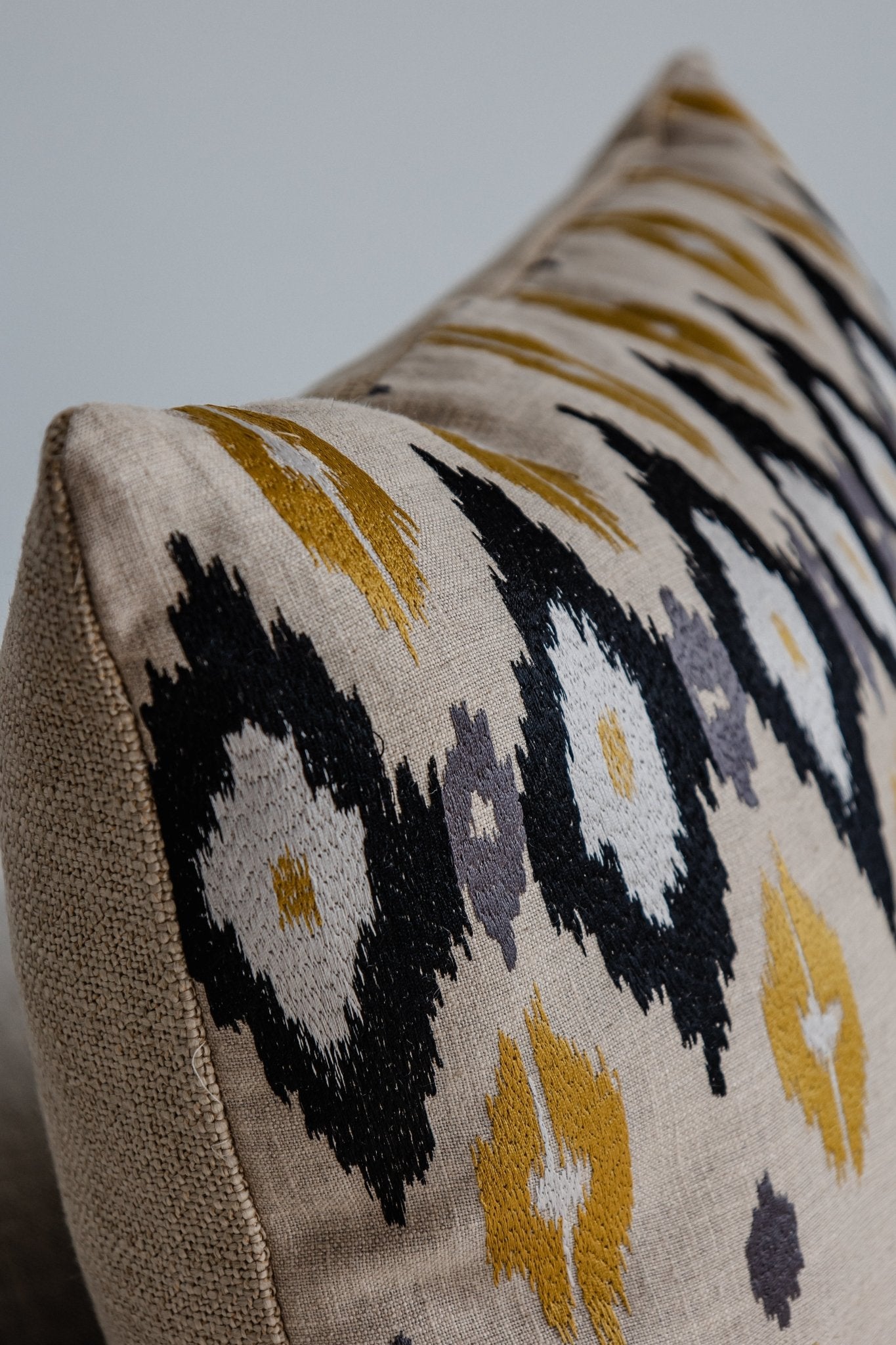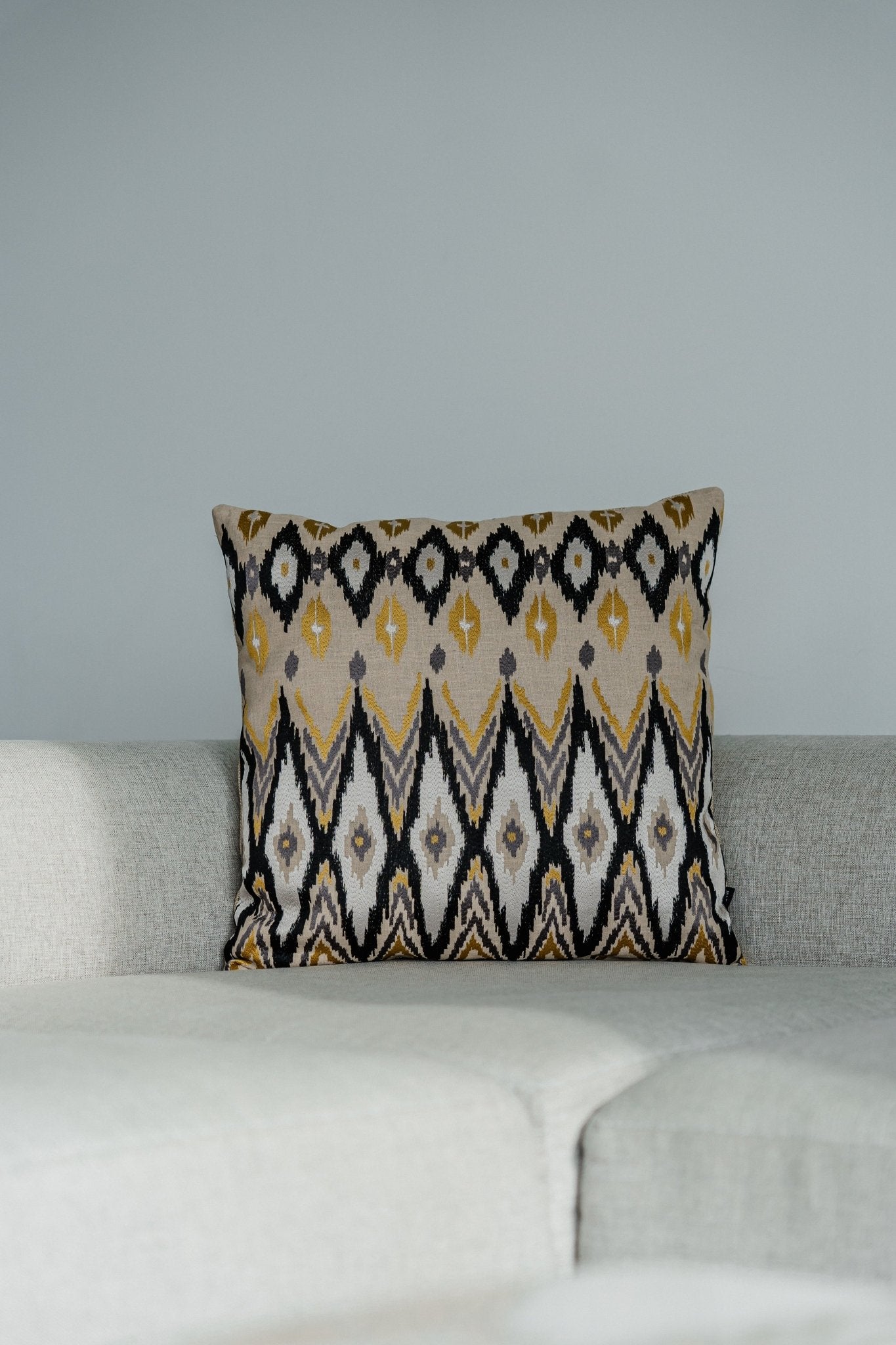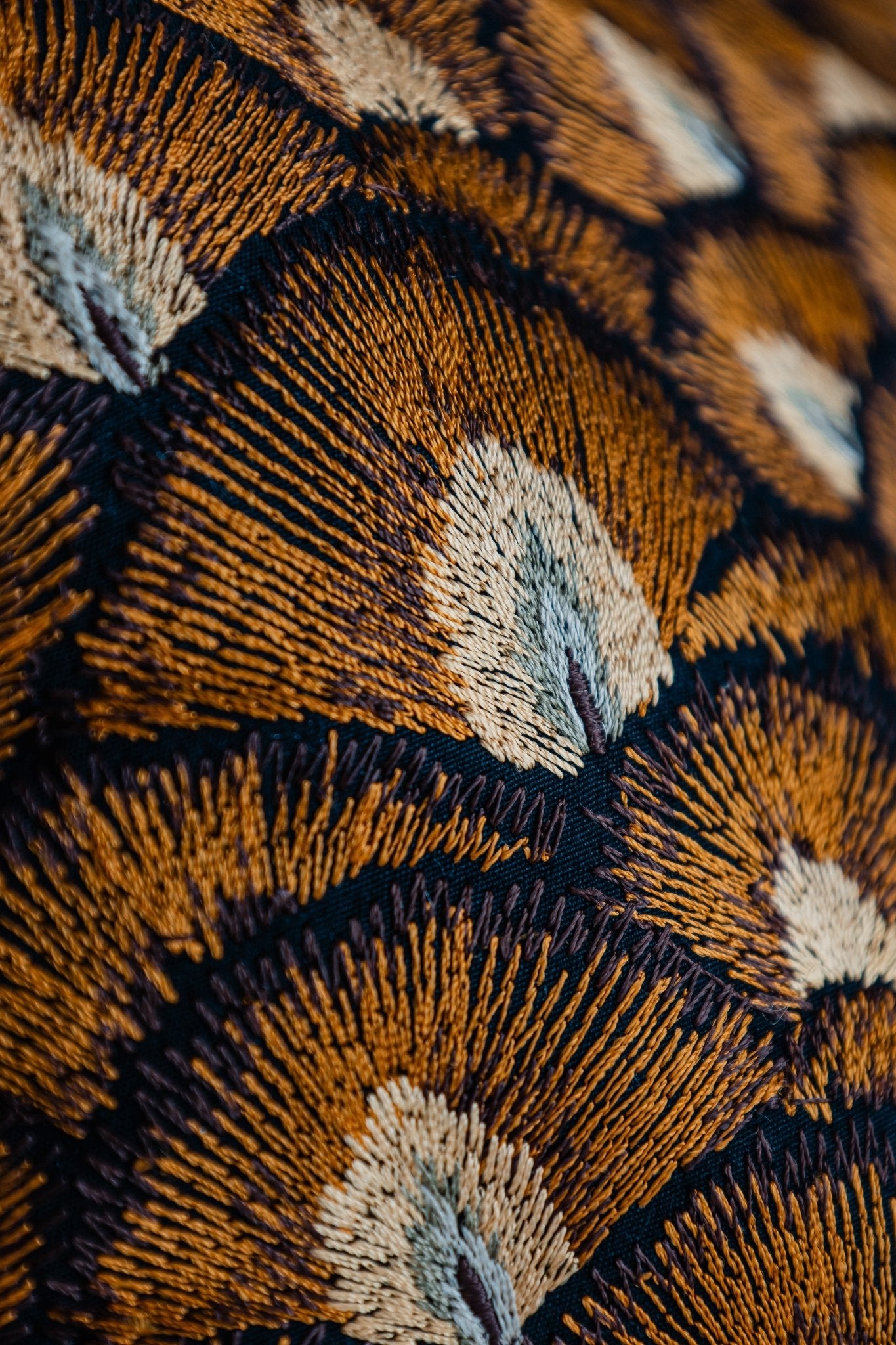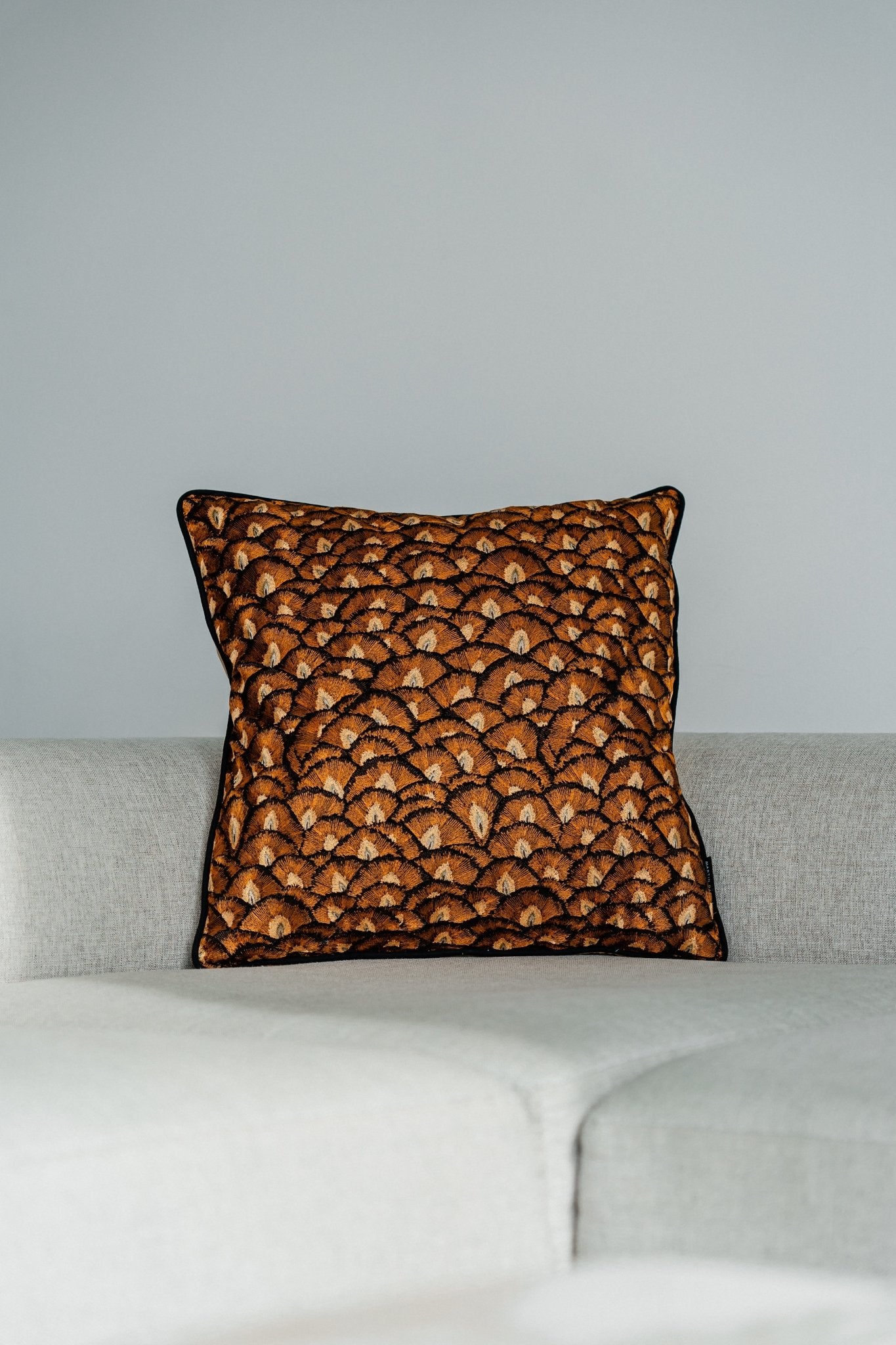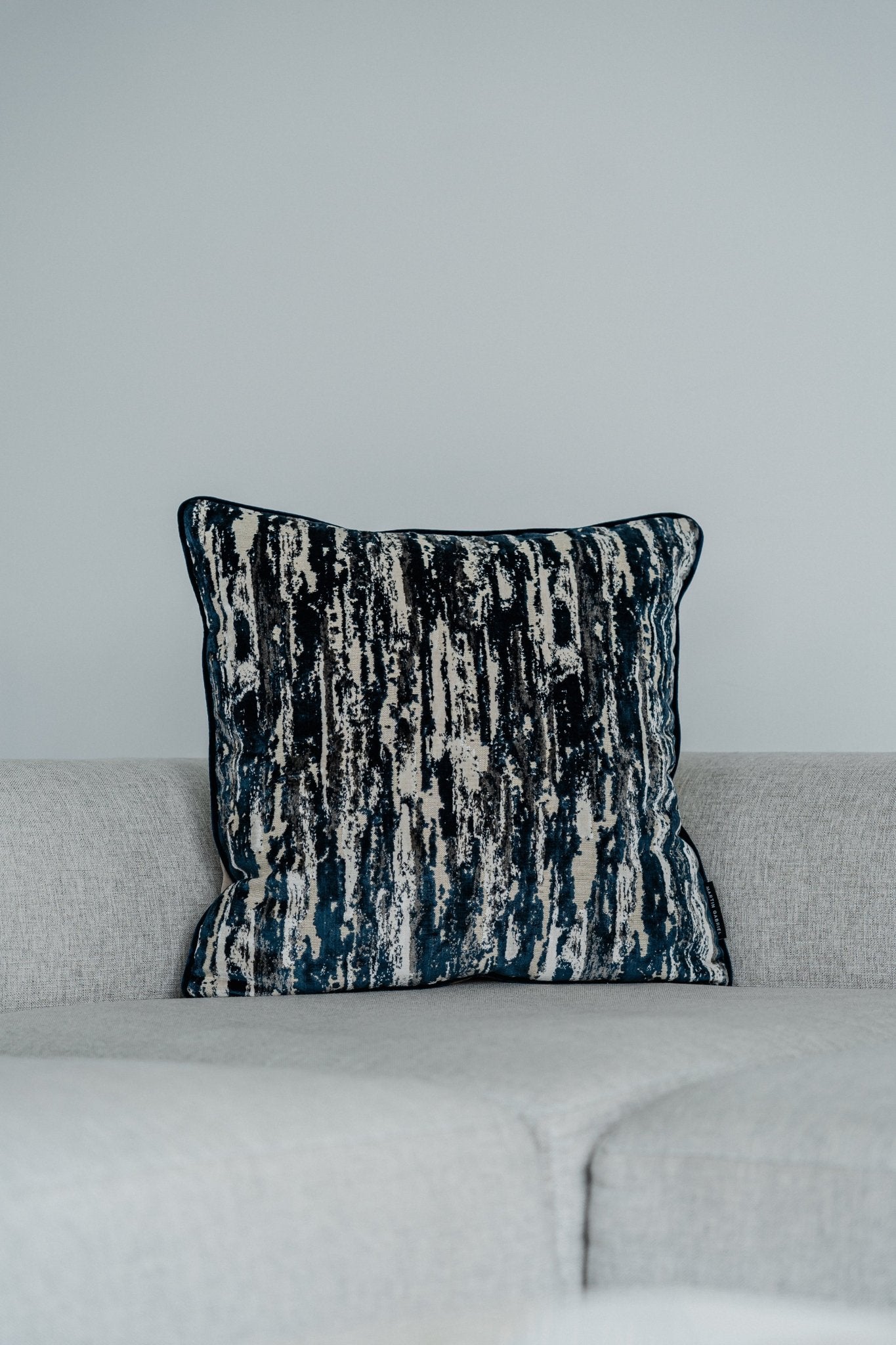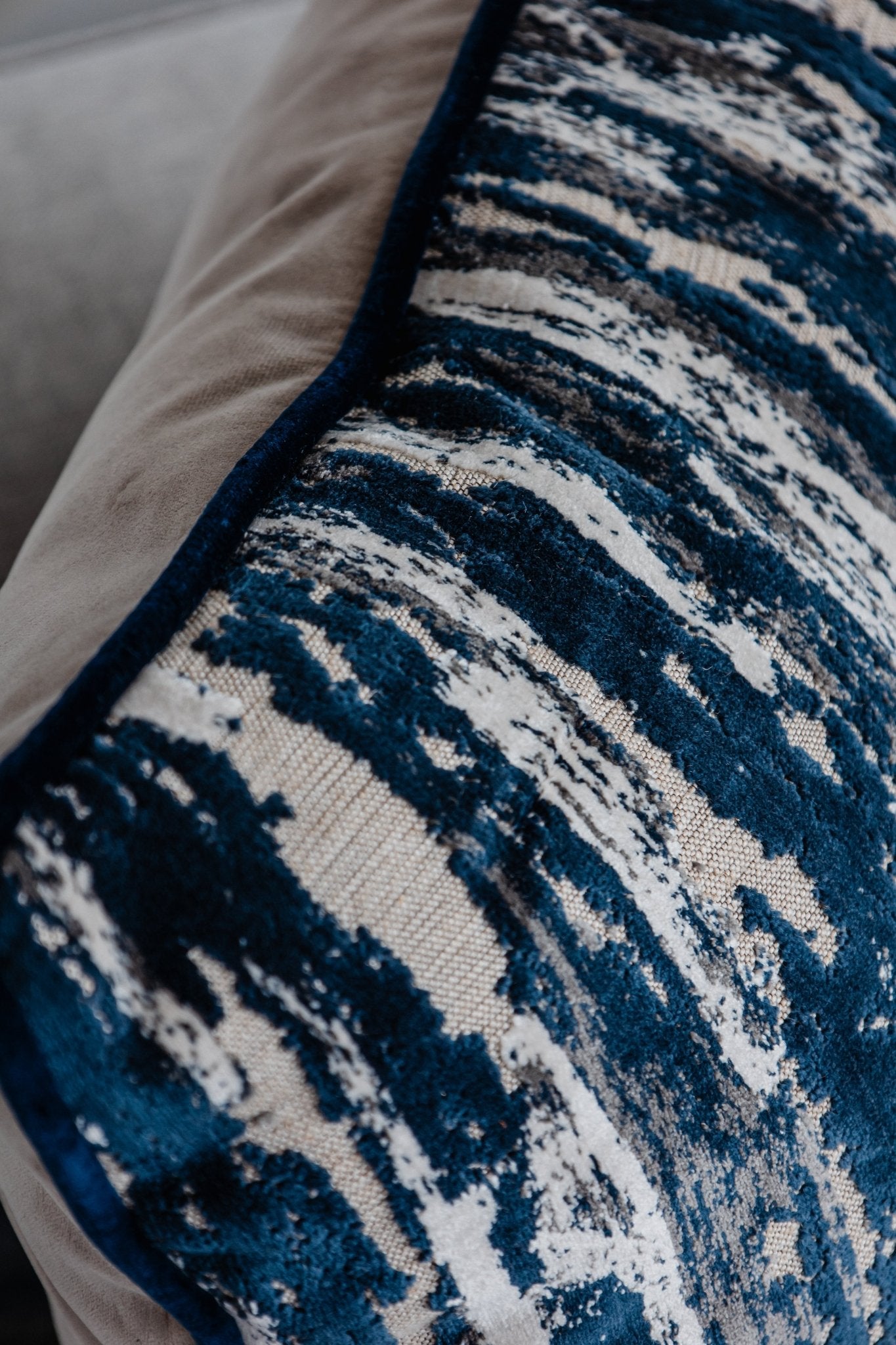Textiles structure rooms, dampen sounds, warm and cool, and touch our skin for many hours a day. What we use on the sofa, under the covers, and at the window affects our comfort, health, and environmental impact. Making smart choices here saves energy, avoids pollutants, and creates spaces where we enjoy breathing.
The good news: There are proven materials and manufacturing methods. They combine design, feel, and durability with a significantly smaller ecological footprint. And they're no longer just a niche product.
Why fabrics are more than decoration
Textiles are the silent directors of our living quality. They influence:
- Acoustics by reducing reverberation
- Temperature sensation, for example through breathable natural fibers
- Air quality, as surfaces can bind or release dust
- Lighting mood, from translucent curtains to tightly woven blackout blinds
Many conventional fabrics are treated with finishes intended to improve drape, feel, or dirt repellency. Such finishes often contain synthetic resins, plasticizers, or halogenated substances. Choosing products with reliable standards and transparent supply chains reduces the risk of unnecessary odors in the room.
Materials with meaning: from organic cotton to Tencel
The choice of material determines resource consumption, maintenance requirements, and longevity. Here's an overview of proven, environmentally friendly options:
- Organic cotton: Grown without synthetic pesticides or genetically modified seeds, cultivated in crop rotations, and often coupled with more efficient water management. High-quality organic cotton with long fibers is comfortable on the skin and durable, especially in finer bedding.
- Linen: Derived from flax, it grows in temperate zones and requires little irrigation and fertilizer. Linen is cooling, antistatic, naturally dirt-repellent, and gets softer with every wash. Perfect for table linens, curtains, and summer bedding.
- Hemp: Similar to linen, it's tear-resistant, antibacterial, and durable. Hemp fabrics are ideal for hard-wearing home textiles such as kitchen towels, napkins, and slipcovers.
- Wool: Temperature-regulating, moisture-regulating, and naturally flame-resistant. Fulled or felted wool is suitable for rugs and cushions, while virgin wool is suitable for blankets. Make sure it's mulesing-free and follows careful washing instructions.
- Tencel Lyocell: Cellulose fiber produced from wood in a closed-loop process with a high degree of solvent recovery. Very soft, breathable, and absorbent. A good choice for bedding, fillings, and curtains.
- Recycled fibers: Made from used textiles or PET bottles. Recycled polyester is robust and easy to care for, making it ideal for fillings, outdoor cushions, or shower curtains. Blends with natural fibers or alternative cellulose fibers are suitable for direct skin contact.
It's not just the fiber itself that's important, but the entire processing. A linen fabric can be coated with silicone or mechanically softened; a cotton cloth can be mercerized, bleached, or undyed. The lower the chemical treatment, the better for indoor air quality and compostability at the end of its life cycle.
Handmade and local: character, transparency and repairability
Handwoven blankets, hand-sewn pillowcases, knotted rugs made from natural yarns: These products bear the signature of their makers, often with small irregularities that add to their appeal. Craftsmanship brings advantages:
- Shorter supply chains and traceable sources
- Production on demand, less overhang and disposal
- Ease of repair, for example through replaceable zippers and open access to seams
- Social impact when cooperatives are paid fairly
Shopping locally reduces transport emissions and allows you to inquire directly about care, spare parts, or reorders. A custom-sized pillowcase is often just a phone call away.
Certificates that provide orientation
Seals do not replace independent testing, but they do provide reliable minimum standards. Relevant markings:
- GOTS: Global Organic Textile Standard, covers ecological criteria from the fiber to the finished product, including social criteria.
- OEKO-TEX Standard 100 or MADE IN GREEN: Tests for harmful substances, MADE IN GREEN also includes transparency about production facilities.
- Fairtrade Cotton: Focus on social and economic conditions during cultivation.
- EU Ecolabel: Environmental label for specific product groups, assesses the entire life cycle.
- FSC or PEFC for viscose base: ensuring responsible forest management of cellulose fibers.
- RWS or GRS: Responsible Wool Standard for animal welfare, Global Recycled Standard for recycled content and supply chain control.
A product with several consistent seals signals quality, but brands can also operate transparently without a label. Open communication about chemical management, energy consumption, and water treatment is a good sign.
Healthy living atmosphere: what textiles contribute
Breathable natural fibers regulate moisture, which is especially noticeable in the bedroom. Linen or organic cotton bed linen absorbs and releases sweat, maintaining a more pleasant microclimate. Wool binds volatile particles and neutralizes odors.
Less equipment means fewer potential emissions. Look for uncolored options for babies, sensitive individuals, and allergy sufferers. The soundscape also benefits: Thick curtains, carpets, and upholstered surfaces absorb sound, which has a stress-reducing effect.
Another issue is microplastics. Synthetic fibers can shed fibers during washing. Choosing natural materials or using filters and laundry bags when washing helps reduce pollution in waterways.
Material comparison at a glance
| material | Life cycle assessment potential | Skin feel | Care | longevity | Microplastic risk | Recommended inserts |
|---|---|---|---|---|---|---|
| organic cotton | high | soft, breathable | uncomplicated | high with good quality | small amount | Bed linen, towels, curtains |
| Linen | very high | cool, grippy | wrinkles, quick drying | very high | small amount | Table linen, curtains, summer textiles |
| hemp | very high | firm, becomes softer | easy-care | very high | small amount | Kitchen towels, slipcovers, robust covers |
| Wool | high | warm, temperature-balancing | wash gently | very high | small amount | Blankets, carpets, pillows |
| Tencel Lyocell | high | silky, cool | easy-care | high | small amount | Bed linen, fillings, curtains |
| Recycled polyester | medium to high | depending on the tissue | very easy to care for | high | available | Fillings, Outdoor, Shower Curtains |
The Life Cycle Assessment Potential category evaluates the potential environmental benefits of sustainable production. While individual cases may vary, brand transparency helps with classification.
Recognizing longevity: Quality features that count
Buying less, but with durability, pays off. Here's how to identify robust home textiles in-store or online:
- Fabric weight: For bed linens and towels, realistic weights are given. Towels often weigh between 500 and 700 g/m²; waffle weave can be lighter and dries faster.
- Fiber length and yarns: Long-staple cotton, ring-spun, and two-ply yarns last longer and pill less. Long, even fibers are a sign of quality in linen.
- Weave: Percale is dense and matte, satin is smooth and slightly shiny, and twill is robust with a characteristic diagonal weave. For curtains, tightly woven fabrics provide insulation.
- Seams and details: Double-stitched edges, neat finishing, concealed zippers, button plackets with spare buttons, reinforced corners on duvet covers.
- Color and lightfastness: Take colorfastness and washing temperature information seriously. Vegetable dyes can look fantastic, but they require careful care.
- Finish: Terms like "non-iron" often indicate resins. Preferably choose mechanically pre-washed fabrics, which shrink less.
- Warranty and repair: Suppliers with repair services, spare parts, or a guarantee of continued purchase score highly in terms of service life.
A simple test for pillowcases and blankets: Rub the fabric vigorously between your fingers. High-quality fabric will feel dense and stretchy without becoming stringy.
Conscious consumption: plan, care, share
A plan prevents bad purchases. A short checklist helps with shopping:
- Clarify function: warm, darken, steam, decorate
- Define colors: three to four tones that run through
- Take exact measurements to avoid waste and returns
- Determine the material list: at least 70 percent natural fiber, if possible pure
- Check whether second-hand, rental service or repair are possible
Care has a major impact on the environmental impact. Gentle routines noticeably extend the lifespan:
- Wash less often and at cooler temperatures, ventilate sufficiently
- Heavy-duty detergent in powder form for whites, color detergent without optical brighteners for coloreds
- No fabric softener for towels and functional fibers, this reduces absorbency
- Air dry, if necessary briefly warm in the dryer for fluffiness, do not dry completely
- Treat stains selectively, use gall soap, oxygen bleach or citric acid wisely
- Use Guppyfriend bags or filters for synthetic textiles
- Only air wool, wash occasionally in cold water, dry flat
Maintaining instead of replacing saves money and resources. A loose hem can be sewn in ten minutes, and replacing a zipper costs less than buying a new pillow.
Use recycled materials wisely
Recycled materials are particularly suitable for robust, easy-care applications:
- Fillings for pillows and blankets that are washed frequently
- Outdoor textiles designed to withstand the weather
- Shower curtains and dirt-trapping mats
Two clues are crucial:
- Maintain fiber purity: Blended fabrics complicate later recycling. If possible, keep the fibers single-use or choose clearly labeled blends with a detailed end-of-life solution.
- Containing microfibers: Tight weave structures, special washing bags, and filters reduce abrasion. For heavily contaminated products, it's worth considering alternative cellulose fibers.
Equip rooms specifically
Every room has its own requirements. Here are a few ideas that work:
- Bedroom: Linen or organic cotton bed linens, wool throw, tightly woven curtains for temperature regulation, wool rug runners. All breathable and tranquil.
- Living room: Removable covers, interchangeable cushions, a hand-knotted wool rug for acoustics and warmth. Colorful accents with plant-dyed linen cushions.
- Kitchen and dining area: Linen or hemp tea towels for absorbency and quick drying, pre-washed linen tablecloths, and napkins instead of paper towels.
- Bathroom: Medium-weight organic cotton towels for quick drying or waffle-knit linen. Recycled polyester shower curtain with replaceable weights.
- Children's rooms: Robust and washable, zippered pillows, flat-textured rugs, and colorfast cotton covers. Keep an eye on certifications for non-toxicity.
Purchasing conversation: the right questions
Those who ask specific questions in the store or online make better decisions:
- Where does the fiber come from and is there evidence for it?
- What dyes and finishes were used?
- Is the fabric pre-washed or can it still shrink, and if so, how much?
- What is the thread count or weight per square meter?
- Are there spare parts, aftermarket options, or a repair service?
- What care is recommended and what does this mean for everyday life?
Transparent answers speak volumes about the provider's quality. Silence or evasive wording are warning signs.
DIY, repair and upcycling
Picking up needle and thread yourself creates a connection to the object. Simple projects are quickly implemented:
- Pillowcases with hotel closure made from fabric scraps
- Table runner made from old linen sheet
- Patchwork blankets made from old shirts
- Carpet strips woven from old textiles
Repair cafés can help with zippers or difficult seams. Anyone with a basic set of fabric scissors, needles, thread, and a tape measure can react quickly before a small tear becomes a big one.
Price, value and priorities
High-quality textiles cost more but provide years of usefulness. A simple calculation helps: divide the purchase price by the expected weekly usage. A well-sewn duvet cover that will last for ten years almost always beats the supposedly bargain option.
Where it is particularly worthwhile to invest:
- Bed linen and towels, due to frequent use
- Curtains that visibly influence acoustics and room climate
- Carpets that provide warmth and define the room
Elsewhere, things are cheaper: decorative pillowcases can be sewn from leftover pieces, and napkins made from linen scraps can be cut and hemmed in minutes.
Pitfalls to avoid
A few typical misunderstandings can be easily avoided:
- High thread count equals better quality: What matters is fiber length, yarn quality, and weave density, not a marketing number.
- Non-iron is always better: A pleasant feel comes at a price. Mechanically pre-washed fabrics are a good alternative.
- Blended fabrics are always more durable: This may be true, but it makes recycling more difficult. Purity pays off at the end of their life.
- Cheap goods are especially worthwhile: savings often arise from thin yarns, poor seams, or weak zippers. Replacements arrive sooner than expected.
Short material checklist for your next purchase
- Preferred fibers: linen, hemp, organic cotton, wool, Tencel
- Check certificates: GOTS, OEKO-TEX, EU Ecolabel, RWS, GRS
- View workmanship: Clean seams, sturdy edges, spare button
- Keep care instructions realistic: Does the care match the use?
- Question about chemistry: Which equipment, which dye?
- Consider end-of-life: Variety purity, take-back programs, repair
Sustainable home textiles aren't a sacrifice of style. Quite the opposite; they bring depth, materiality, and tranquility to rooms. The combination of natural surfaces, attractive colors, and solid craftsmanship has a timeless appeal. And it's good for you, day after day.




